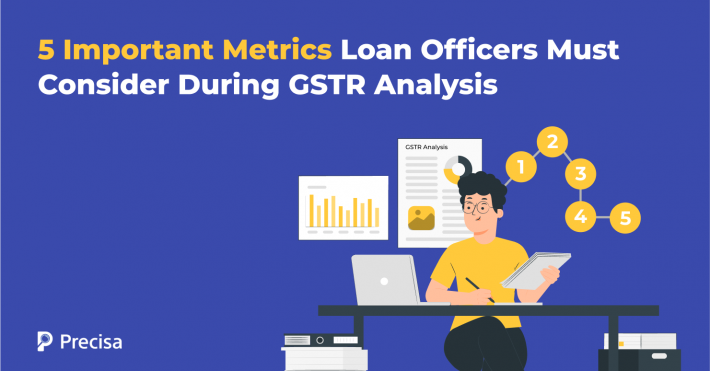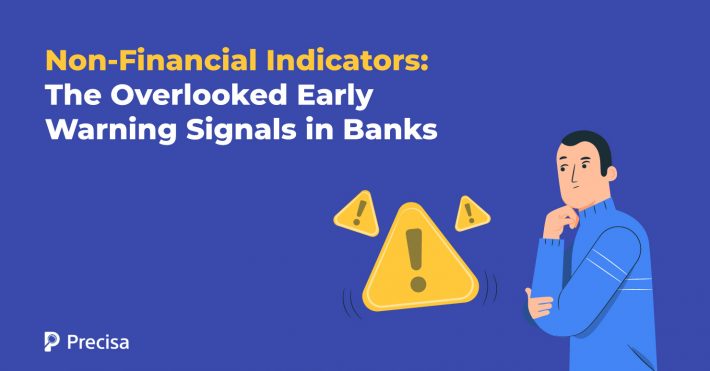What is the Decisioning Stage in Loan Processing?

Have you ever wondered what happens when you apply for a loan? A complex decision-making process is set in motion.
At present, this decisioning stage in loan processing stands at the crossroads of a transformation, wielding the power to shape the destinies of individuals and businesses alike. By eliminating some of the more time-consuming procedures from their workflow, automated loan decisioning has made this process easier for financial institutions.
A survey by McKinsey & Company found that 75% of all credit decisions incorporate automated processes.
As we understand the decisioning stage in loan processing, let’s uncover the mechanics and transformative impact of automated loan disbursal on the future of lending.
The Decisioning Stage in Loan Processing: An Outline
The decisioning stage in loan processing refers to the step of the lending procedure where a financial institution or lender assesses all the data and information linked to a loan application to decide whether to approve or deny the loan.
This step is crucial since it establishes an applicant’s eligibility for the requested loan amount and the conditions that will apply to it.
- Application Review: The lender examines the borrower’s application, including personal, financial, and credit history details.
- Credit Assessment: The lender gauges the applicant’s creditworthiness through credit reports and scores.
- Income Verification: Verification of the applicant’s income to ensure repayment capability.
- Collateral Evaluation: Assessing collateral’s value and condition for secured loans.
- Risk Assessment: Using models to evaluate loan risk based on various factors.
- Regulatory Compliance: Ensuring loan decisions adhere to legal regulations.
- Decision Making: Lender’s verdict on loan approval, denial, or terms.
- Communication: Notifying the applicant of the decision, terms, and conditions.
- Documentation: Preparing official loan documents for approved applications.
The Decisioning Stage in Loan Processing: Challenges with the Traditional Approach

Traditional methods of loan decision-making can stifle a lending company’s expansion in a number of ways.
- Manually driven credit decisioning methods are gradually falling out of place. Customers anticipate receiving cash immediately and tangible items the same day or the following.
- Traditional loan decisioning frameworks, which rely on systematic financial and credit histories, restrict the lender from considering a number of potential points of sale and user personas.
- Traditional lending, hidden behind seamless frontends, not only costs more but also hinders growth and eliminates the prospect of scalability.
- In addition to being error-prone and subject to bias, manual decisioning adds opacity to the lender’s overall risk exposure.
Role of Automation in the Decisioning Stage in Loan Processing
Automated loan decisioning refers to using technology to expedite loan origination and enhance judgment.
The decisioning stage in loan processing for lenders is challenging and time-consuming, entailing multiple assessments and approvals. To solve this, lenders should use automated lending solutions and streamline this operation, lower risks, and guarantee accuracy.
In automated loan decisioning, borrower data is categorised, captured, detected, and analysed using technology. Business process automation (BPA) can be combined with human judgment to improve document management.
This hybrid technology blends human analysis and insight with the power and speed of artificial intelligence (AI).
When automating the decisioning stage in loan processing, it simplifies the lending process – from collecting borrower information to making loan decisions. Therefore, automated review enables a quicker and more accurate loan approval process by lowering the administration cost, doing away with paper forms, and enhancing underwriting accuracy.
Decisioning Stage in Loan Processing: How Automated Processes Work
By asking a series of questions, an automated loan decisioning system helps lenders decide whether or not they can approve a loan application with an acceptable degree of risk.
The decisioning stage in loan processing normally has five phases or steps.
- Basic information about the borrower is collected during the initial pre-qualification stage in order to establish what kind of loan can be made available.
- The lender is then given the option to ask further questions about the borrower’s credit history and cash flow in order to gain a deeper understanding of the financial standing.
- At this stage of the process, a decision is often reached regarding whether to accept or reject the loan application under specific terms.
- If accepted, more questions are asked about collateral offered on top of personal guarantees from principals involved with the loan.
- After all the information has been entered, it is processed for automated underwriting.
Benefits of Automating the Decisioning Stage in Loan Processing
The following are some of the benefits of automating the decisioning stage in loan processing:
1. Use of Advanced Algorithms and Data Analysis
Automated loan decision-making makes use of advanced mathematical algorithms and data analysis methods. These algorithms comb through applicant data to rapidly and accurately determine creditworthiness.
2. Swift Evaluation of the Borrowers’ Creditworthiness
The automated decisioning stage in loan processing can rapidly evaluate whether an applicant is a suitable candidate for a loan. It analyses factors such as credit history, debt-to-income ratio, and other financial indicators to achieve this.
3. Assessment of Credit Scores, Income Verification, and Risk Assessment Models
Automated systems assess various factors that affect a borrower’s capacity to repay a loan. This includes risk assessment models, income verification, and credit ratings, which are indicators of prior credit behaviour.
4. Reduction of Manual Effort
Lenders can significantly minimise costs, manual intervention, and human underwriting requirements by automating the decision-making process.
5. Informed Decisions on Lending
Systematic, data-driven recommendations for loan approvals or denials are generated by automated loan decisioning processes. Lenders rely on these recommendations to decide whether and how much credit to offer applicants.
6. Modernisation of the Lending Industry
Modernising the lending sector and increasing its responsiveness to borrowers’ requirements is crucial. It enables quicker loan processing, reducing waiting times for applicants and increasing the accessibility of loans.
Takeaway
In summary, the decisioning stage in loan processing is a pivotal moment where automation is reshaping lending. Automated decisioning software has revolutionised the industry, expediting processes and enhancing efficiency.
Precisa’s Bank Statement Analyser is an effective tool for classifying, verifying, and analysing bank statements to uncover abnormalities or manipulations. Our analyser produces the most accurate results, improving your credit appraisal quality.
The tool has transparent pricing and zero hidden charges. We also have customised pricing models to meet the needs of different users.
To know more, book a free demo today.



